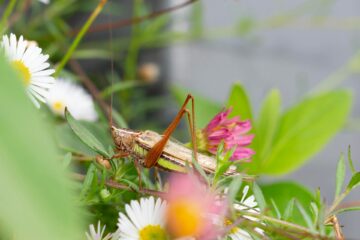Gardening is a relaxing hobby, but it this is only the case if you plan your garden before you start. You need to prepare the soil, select the right plants and accessories, but most importantly: you need to make sure your garden is well-organised! This article will show you how to create a beautiful and stress-free garden by following these simple steps:
Plan your garden layout
Before you begin planting, it’s important that you lay out the design of your garden. This process can be tricky if there aren’t any existing structures or fences in place to act as boundaries for where you want to plant. But don’t worry–there are plenty of ways around this! If possible, try drawing out a rough sketch of how the space will look once it’s been landscaped and make note of any obstacles or challenges that need to be overcome (elevation differences between two areas; uneven terrain). Once this is complete, begin thinking about which plants would work best in each section based on their requirements (sun vs shade), how large they’ll get over time, etcetera..
Choose your plants
Now that you’ve decided where to put your garden, it’s time to choose the plants. The first thing to consider is sun aspect–do you want the most shade or least? Next, think about soil type and pH level; some plants prefer sandy soil while others like clay. Finally, think about how much time and energy you can dedicate toward maintaining this space. If your garden will be used primarily by kids who just want something fun in which they can play around with their friends, then maybe an all-flowering vine would be a better choice than one requiring lots of pruning every year or two.
Select the right accessories
When it comes to tools and accessories, there are so many options to choose from that it can be overwhelming. If you’re looking for the right tools for your garden, here are some things to keep in mind:
- Choose the right size. If your hands are small or large, consider getting a tool with an adjustable handle that fits your needs.
- Consider weight as well as size when deciding on which tool will work best for you–you don’t want something too heavy or too light!
- Think about how often you’ll use each tool before making any purchases (if at all). For example: if weeding is only something I do once every couple months during springtime cleanup then perhaps buying my own pair won’t make sense since there aren’t many other occasions where I’d need them outside of this one time period each year.”
Plan your garden by preparing your soil
Before you plant, your garden bed should be free of weeds, rocks, and debris. You can do this by hand or hire a landscaper to do it for you.
Once the soil has been cleared of unwanted items and amended with compost or fertiliser (more on that in a minute), use either a rotavator or spade fork to aerate the soil by turning over its surface layer–a process known as “double digging.” This will create air pockets in which roots can grow without being held down by dense earth.
Watering, pruning and fertilising tips
- Watering: The most important thing to remember when watering your plants is to not overdo it. You don’t want to drown them, but at the same time you don’t want them to dry out completely either.
- Pruning: When pruning your garden, make sure that you do so at least once per week. This will help keep your plants healthy and strong by encouraging new growth from their stems or branches (depending on what kind of plant you’re working with).
- Fertilising: Adding fertiliser can help give your garden an extra boost of energy and nutrients! Make sure not to overdo this step though – too much fertiliser might harm more than help!
Gardening can be really fun and relaxing, but it takes a lot of work.
Gardening can be really fun and relaxing, but it takes a lot of work. If you want your garden to look good, you need to plan ahead and make sure that everything is in order before planting anything. Here are some tips for planning your garden:
- Choose the right plants – You should choose plants that suit your climate, soil type and light conditions so that they can grow well in your area. If there are certain trees or shrubs that have grown well for years on nearby properties then consider growing those as well because they are likely suited for these conditions too!
- Choose accessories – To complement the look of any backyard space we recommend selecting accessories such as furniture pieces which complement each other nicely while still adding colour through their fabric choices or pattern designs.”
We hope that this article has helped you to get started with your garden. There are so many things to consider when planning a new one or renovating an old one, but we’ve tried our best here at Greenhouse Supplies to make it as easy for you as possible by providing all the information needed in one place!
Keep on top of your gardening with our free online journal
Our free online tool allows you to organise your ideas and garden plans and help you be as efficient as possible in the garden.
Sign up now

